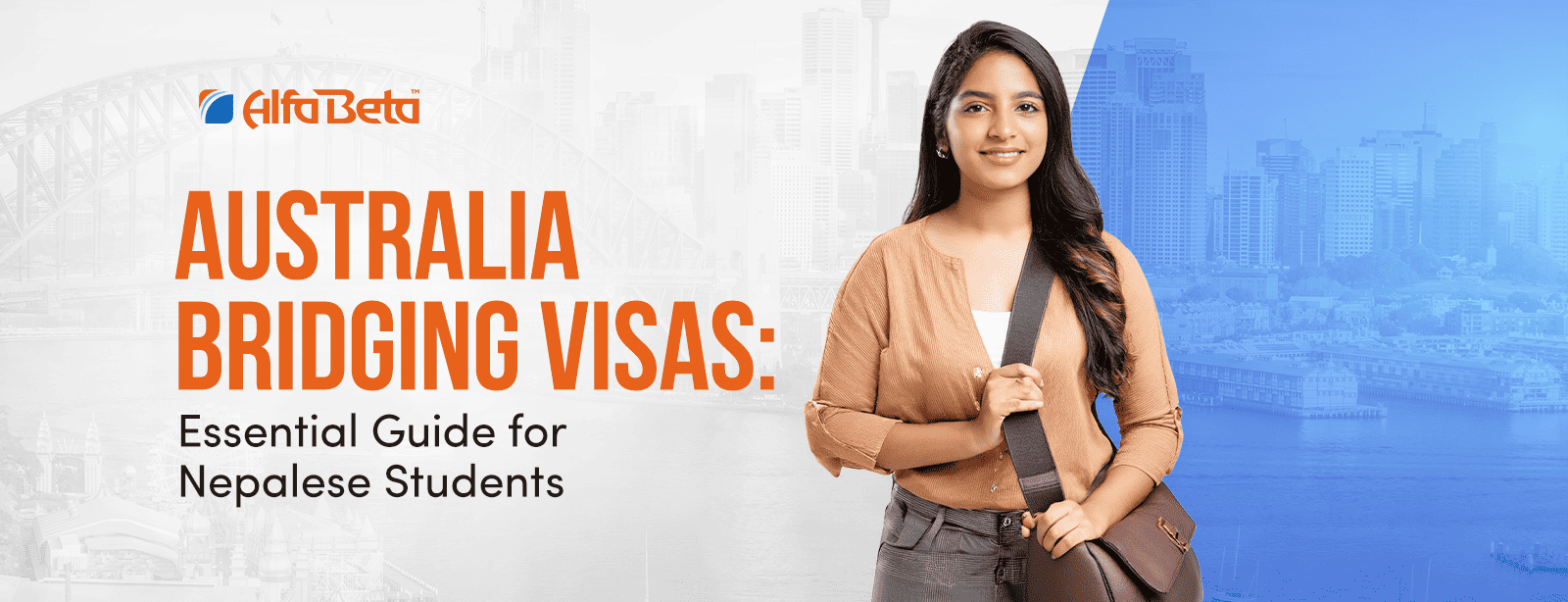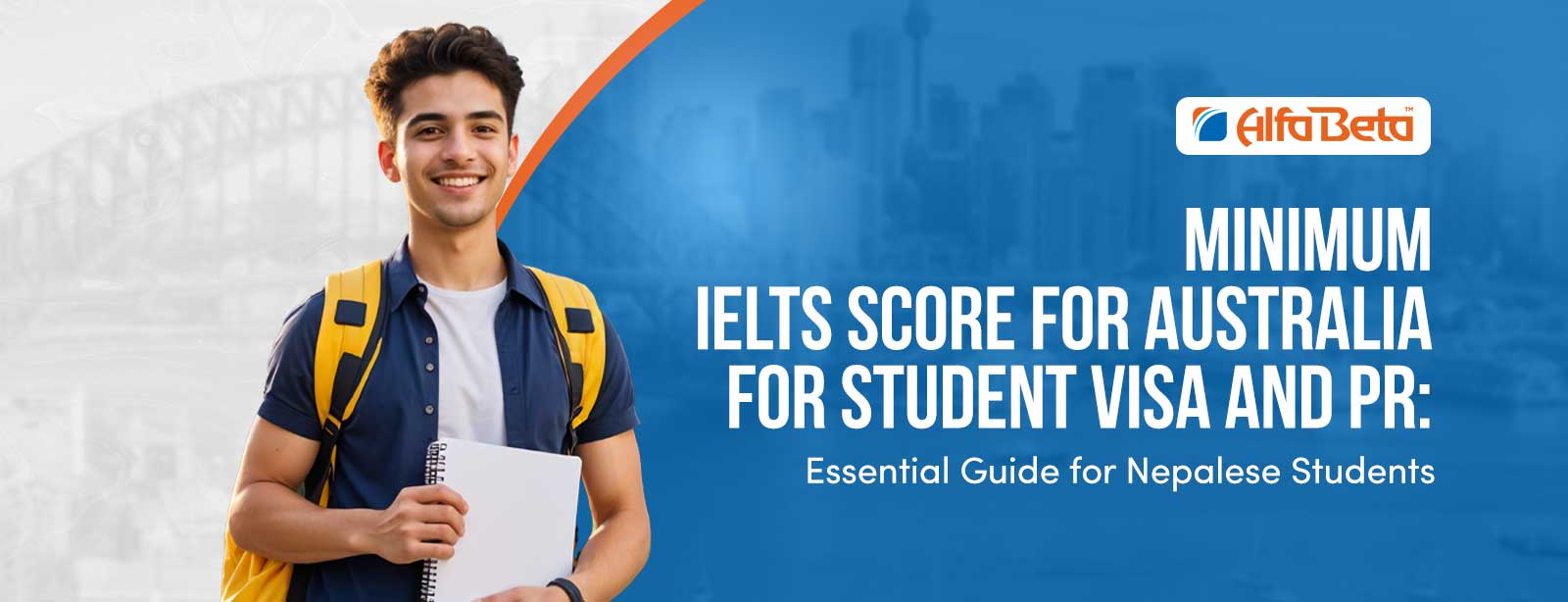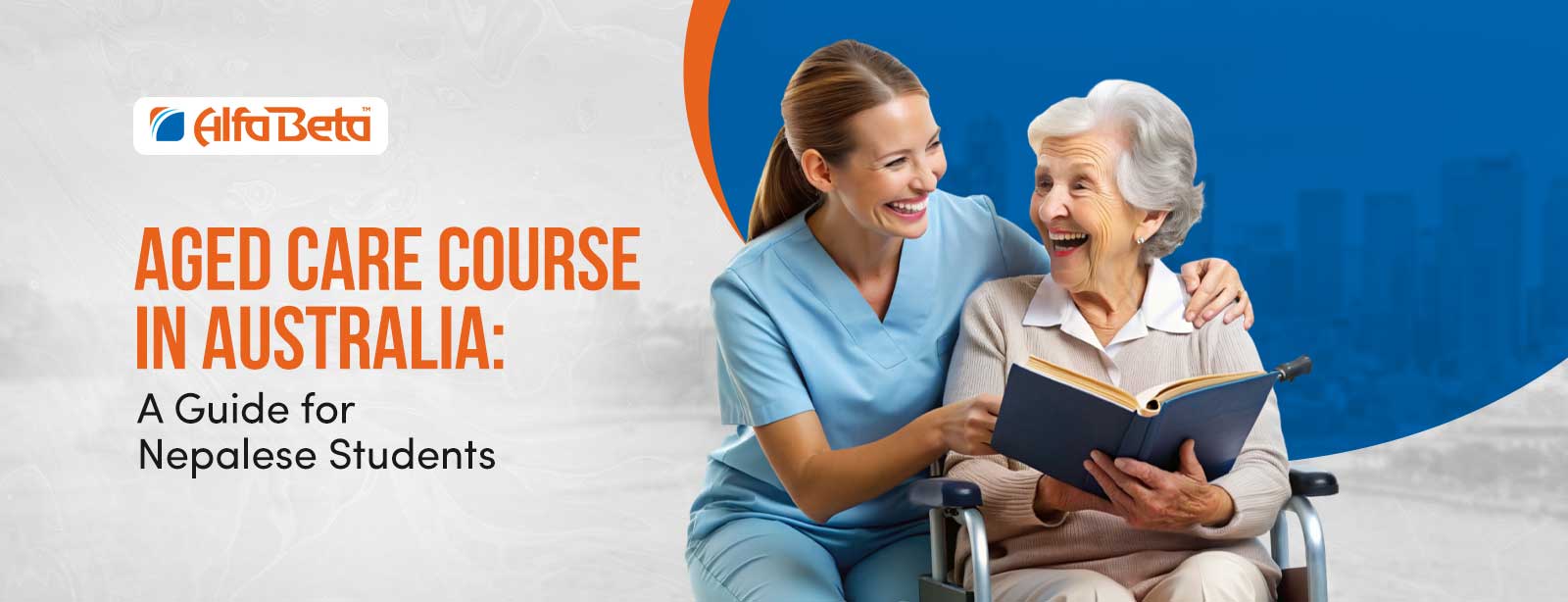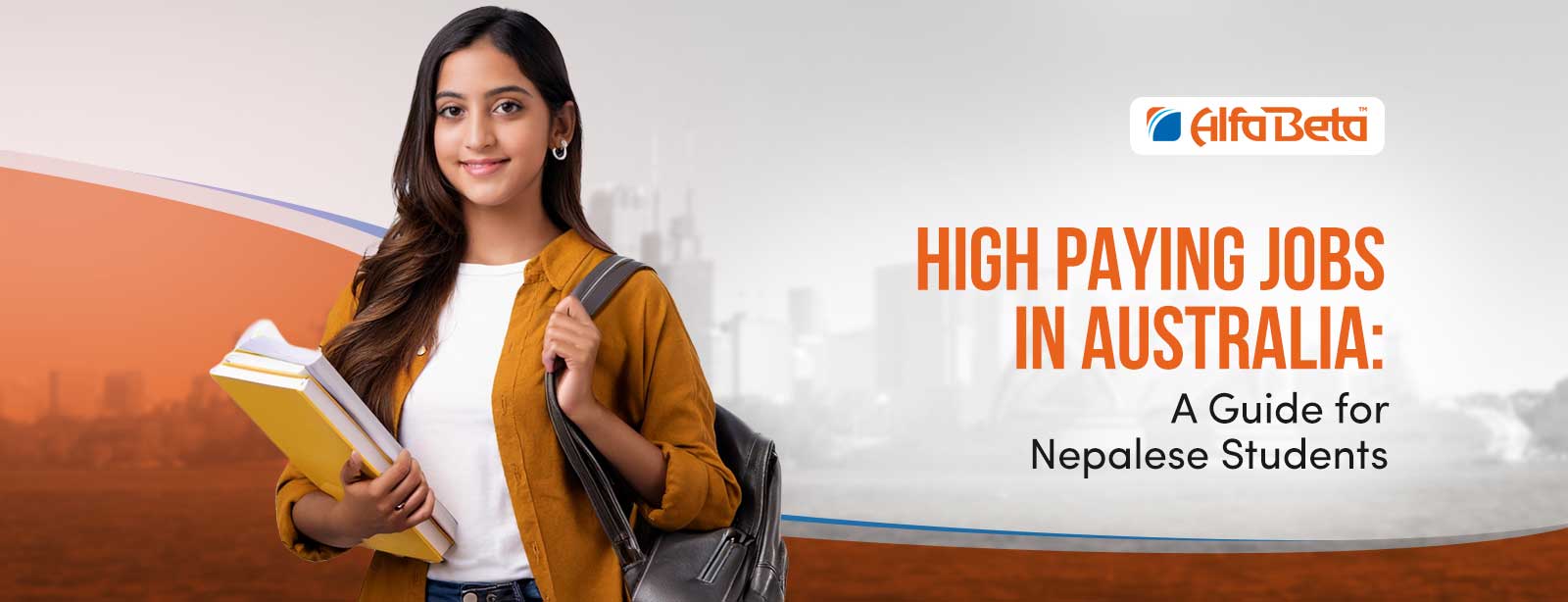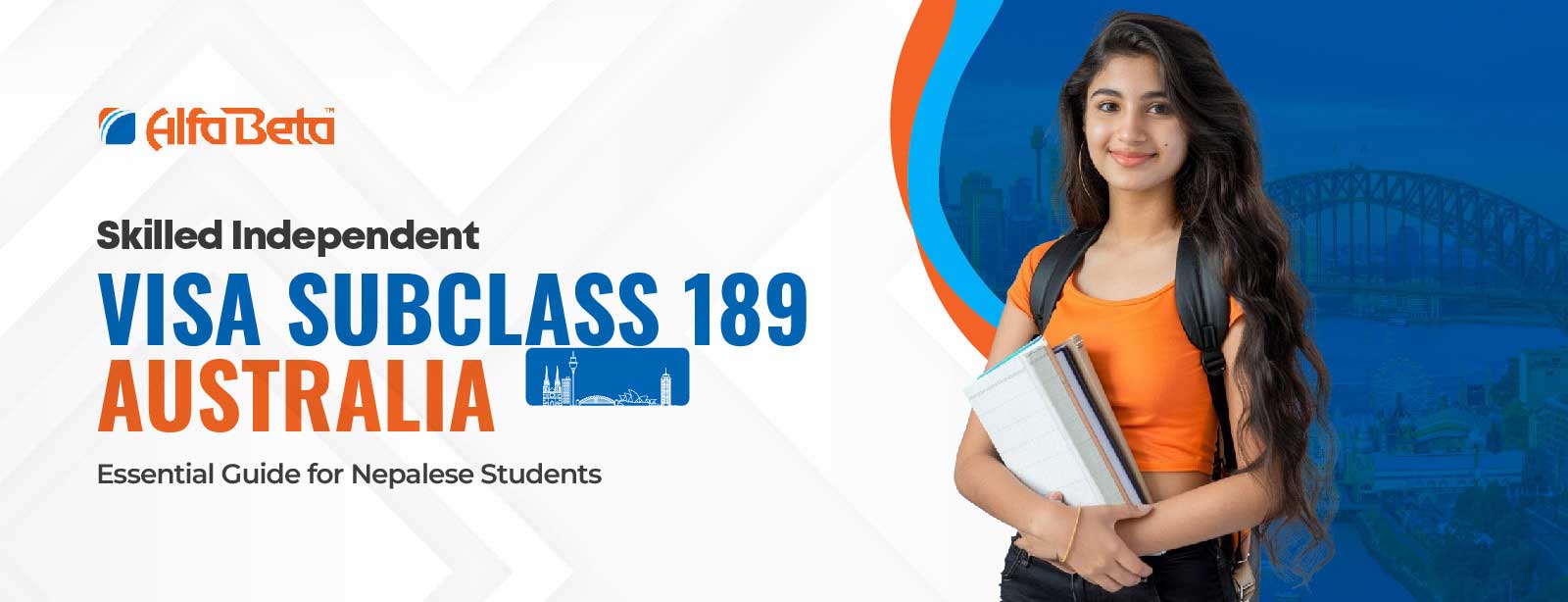Learn all about Australia bridging visas for Nepalese students. Explore the different types, key benefits, eligibility requirements, and essential tips to help you stay legally in Australia while transitioning between visas and securing your study or career goals.
Introduction
If you’re a Nepalese student in Australia and your current visa is ending while you wait for a new one, a bridging visa can help you stay legally in the country. It lets you remain in Australia during the time between your old and new visa. Having knowledge about bridging visas is important so you don’t face problems with studying, working, or staying legally. This guide will explain the different types of bridging visas, their benefits, what you need to apply, and simple tips to help you stay on track with your plans in Australia.
Nepalese students in Australia often feel stress and confusion when their visa is about to expire or they are waiting for a new one. They are unsure if they can stay, work, or study during the wait. Bridging visas let international students stay in Australia legally while waiting for a new visa. They are crucial to avoid gaps and allow you to keep studying or working without issues. Bridging visas are especially important for students planning to study further, start working, or switch visas. They help ensure a smooth transition without legal interruptions.
Overview of Australia Bridging Visas
Bridging visas help you stay in Australia legally while you wait for a decision on a new visa. They are temporary visas that fill the gap between two visas. For Nepalese students, understanding these visas is important to avoid any problems with staying, studying, or working in Australia.
There are different types of bridging visas. Each one has a specific purpose, and the rules can be different. Some let you work; some don’t. Some are given automatically, while others require you to apply.
| Visa Type | Purpose | Work Rights | When Will You Get It |
|---|---|---|---|
| Bridging Visa A (BVA) | Stay while waiting for a new visa decision | Sometimes, depending on your previous visa | When you apply for a new visa in Australia |
| Bridging Visa B (BVB) | Travel and return to Australia while waiting | Yes | You must apply separately |
| Bridging Visa C (BVC) | For those without a valid visa who apply for a new one | Sometimes | When you apply for a new visa without holding one |
| Bridging Visa E (BVE) | Last option to stay lawfully if you don’t have a visa | Usually No | Must apply in special situation |
Seek guidance from a registered migration agent for personalized advice.
Why Nepalese Students Need Bridging Visas
Numerous Nepalese students in Australia encounter the issue of their present visa expiring soon, yet the following visa application is still in process. For example:
- An understudy who finishes a course of study and applies for a Temporary Graduate (485) visa may need to wait for weeks or even months for approval. A Bridging Visa A (BVA) keeps them in the country legally.
- A student wanting to study another course or higher education may face visa expiry before the new one is approved. Without a bridging visa, they could become illegal and face deportation.
- Unexpected issues like visa expiry or delays in application processing can make students unlawful. A Bridging Visa C (BVC) or E (BVE) can help them stay legally while resolving their situation.
Bridging visas ensure students stay protected during these changes, continue their education without disruption, and avoid missing valuable job opportunities.
Common Types of Australia Bridging Visas
- Bridging Visa A (BVA – Subclass 010)
- Use-case: When applying for a new visa while your current visa is still valid.
- Pros: Enables you to stay legally while processing; possible work rights.
- Cons: No right to travel unless you apply for BVB.
- Best for: Students applying for a graduate visa or course change while on an active student visa.
- Bridging Visa B (BVB – Subclass 020)
- Use-case: When you need to travel outside of Australia and return while awaiting a visa decision.
- Pros: Allows overseas travel and return; retains bridging status.
- Cons: Must be applied for and approved independently in advance of travel.
- Best for: Students who need to go abroad temporarily on a BVA.
- Bridging Visa C (BVC – Subclass 030)
- Use-case: When you apply for a new visa but do not hold a valid visa.
- Pros: Lets you stay legally during processing.
- Cons: Usually no right to work; no travel allowed.
- Best for: Applicants who missed their visa deadline but applied soon after.
- Bridging Visa D (BVD – Subclass 041)
- Use-case: When you can’t submit a new visa application straight away (e.g., system failure or incomplete documents).
- Pros: Provides a brief window, usually five days, to prepare and submit a valid visa application.
- Cons: No rights to work; short-term only.
- Best for: Emergencies; unusual for the majority of students.
- Bridging Visa E (BVE – Subclass 050)
- Use-case: When you don’t have a visa and need to make arrangements to leave or apply for another visa.
- Pros: Last option to stay legally and avoid detention or removal.
- Cons: No right to work, heavy reporting obligations.
- Best for: Students who overstayed or did not apply for a new visa on time.
Comparing Bridging Visas: Which One Do You Need?
It depends on your situation:
- If you apply for a new visa while your current visa is valid, BVA is generally granted.
- Need to travel while waiting? Apply for a BVB.
- If your visa has expired, you may need a BVC or, in urgent cases, a BVE.
Each visa has conditions about work, study, and travel, so choose the right one to stay legal in Australia.
Key Differences
- BVA: For those with a valid visa applying for a new one. No travel rights. Work rights depend on the previous visa or separate application.
- BVB: For travel during visa processing. Typically includes work rights where eligible.
- BVE: For those without a valid visa. No work or travel rights, with strict conditions.
Eligibility and Process
General Eligibility Criteria
- Be physically present in Australia upon application.
- Have applied or be in the process of applying for a new substantive visa (e.g., student or graduate visa).
- Not holding certain excluded types of visas (for some bridging visas).
- Meet character or health requirements.
Required Documents
- Valid passport (with at least 6 months validity)
- Visa application number or reference (from the new visa applied for)
- Proof of current or previous visa (grant notice or VEVO check)
- Personal statement (especially for BVB, explaining reason for travel)
- Evidence of study or work (if applying for work rights)
- Any official notices (e.g., visa refusal, if applying for BVC or BVE)
Common Mistakes to Avoid
- Applying too late – Waiting until your visa expires can limit options.
- Assuming BVA allows travel – BVA ends if you leave Australia; apply for BVB if traveling.
- Missing documents – Not uploading all required papers can delay or lead to refusal.
- Ignoring visa conditions – Overworking or violating terms can affect future applications.
- Not checking VEVO – Always confirm which bridging visa you’ve been granted and its conditions.
Who Can Apply for a Bridging Visa?
- Can students from other countries apply for a bridging visa in Australia?
Yes, students from other countries, including Nepalese students, can apply when applying for a new visa inside Australia.
- Is there a requirement to be in Australia to get a bridging visa?
Yes, applicants must be physically present in Australia at the time of application.
- Can I get a bridging visa if my student visa has expired?
Yes, but you may only be entitled to a BVC or BVE, depending on your situation and how soon you lodge the application after expiry.
- Does lodging a new visa application automatically make one eligible for a bridging visa?
If you lodge a visa application while your current visa is valid, a BVA is generally granted automatically.
- Can I go out of Australia during my bridging visa?
Travel is permitted only on a BVB. Other bridging visas, like BVA, will cease if you depart.
Step-by-Step Application Process
- Create or Log in to your ImmiAccount
Visit immi.homeaffairs.gov.au and access your ImmiAccount.
- Apply for a Substantive Visa
Submit a valid application for your new visa (e.g., 485 Graduate Visa, new Student Visa).
- Automatic Grant (for BVA)
If eligible, a Bridging Visa A is usually granted automatically once your new visa is lodged.
- Apply Separately for BVB or Others (if needed)
- For BVB: Apply using Form 1006 through ImmiAccount.
- For BVC/BVE: Follow special instructions and submit additional documents if your visa has expired.
- Attach Supporting Documents
Upload required documents such as passport, previous visa, new visa application, and personal statement (if needed).
- Submit and Pay Fees (if required)
Some bridging visas (like BVB) have a fee. Complete payment to finalize submission.
- Wait for Confirmation
Check your ImmiAccount and email for the visa grant notice. Track visa status on VEVO.
Ask for guidance from a migration agent if you need help.
Tips for a Successful Bridging Visa Application
- Apply Early: Apply for your new visa before your current one expires to avoid stress and limited options.
- Use Your ImmiAccount: Apply through ImmiAccount for faster processing and updates.
- Keep Documents Ready: Prepare passport, visa details, proof of enrollment or graduation, and additional forms in advance.
- Know Your Visa Type: Choose the correct bridging visa (BVA, BVB, etc.) based on your situation.
- Double-Check Application Info: Ensure all details are accurate to avoid delays or refusals.
- Follow Conditions: Check visa conditions, especially work rights and travel limits, using VEVO.
- Seek Expert Help: For complex situations, consult a registered migration agent like Alfa Beta.
Rights, Limitations, and Student Life on a Bridging Visa
Most students on a Bridging Visa A (BVA) can stay and study in Australia while awaiting their new visa. Work rights depend on the previous visa or new application. Only Bridging Visa B (BVB) allows travel outside Australia and return. Life on a bridging visa can be stressful, but many Nepalese students continue to work part-time, study, and live normally with proper planning.
Work and Study Conditions
- Bridging Visa A (BVA)
- Study: Allowed in most cases.
- Work: Allowed if your previous visa had work rights or if you apply separately showing financial hardship.
- Bridging Visa B (BVB)
- Study: Allowed, same as BVA.
- Work: Follows the same rules as BVA.
- Bridging Visa C (BVC)
- Study: Usually allowed.
- Work: Not allowed unless you apply and get permission.
- Bridging Visa E (BVE)
- Study & Work: Very limited; working usually not allowed unless special circumstances.
Travel Rights and Important Restrictions
- Bridging Visa A (BVA)
- No travel rights. If you leave Australia, the BVA is cancelled.
- Apply for BVB before travelling.
- Bridging Visa B (BVB)
- Allows travel in and out of Australia during a set period.
- Must provide a valid reason for travel and get approval before leaving.
- Bridging Visa C (BVC) & E (BVE)
- No travel rights. Leaving Australia cancels the visa, and re-entry is usually not allowed.
Common Mistakes to Avoid
- Leaving on a BVA without a BVB – You won’t be able to return on the same application.
- Not applying early for BVB – It may take several days to process.
- Ignoring expiry dates – BVB travel permission has a set period. Plan your trip carefully.
Managing Life as an International Student
- Stay Informed: Regularly check your visa status on VEVO and keep a copy of your visa grant notice.
- Maintain Routine: Continue studies, attend classes, and follow your timetable.
- Budget Wisely: Save money and plan expenses, as work rights may be limited.
- Seek Support: Talk to your university’s international office or a migration expert like Alfa Beta.
- Avoid Legal Trouble: Follow all visa conditions to avoid issues.
- Stay Connected: Keep in touch with family and student groups for support.
Frequently Asked Questions About Bridging Visas
- What is a bridging visa and why do I need one?
A bridging visa allows you to stay legally in Australia while you wait for a new visa decision or resolve your visa status.
- Do I get a bridging visa automatically?
Yes, in most cases, if you apply for a newjab visa before your current one expires, a Bridging Visa A (BVA) is given automatically.
- Can I work on a bridging visa?
It depends. Some bridging visas include work rights, but others require you to apply separately or meet specific conditions.
- Can I travel while on a bridging visa?
Only the Bridging Visa B (BVB) lets you leave and return to Australia. Other bridging visas will be canceled if you travel.
- What happens if my visa expires before I apply?
You may still apply for a Bridging Visa C (BVC) or E (BVE), but your situation will be more complicated. It’s best to act quickly and seek advice.
Conclusion
Bridging visas help Nepalese students stay legally in Australia while they wait for a new visa or fix an expired one. These visas come in different types, like BVA, BVB, BVC, and BVE, each with its own rules. For example, some allow you to study and work, while others may limit your rights or not let you travel. Knowing which bridging visa fits your situation is important, especially if you're changing courses, applying for a graduate visa, or facing delays.
To avoid problems, apply early, keep your documents ready, and check your visa status regularly. Mistakes, such as leaving Australia without a Bridging Visa B, can cancel your application. Managing life on a bridging visa may feel stressful, but with the right planning and advice, you can stay on track with your goals. If you're unsure, it’s best to get support from experienced consultants like Alfa Beta, who can guide you through the process step by step.
